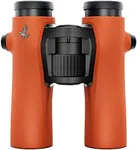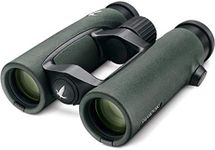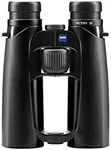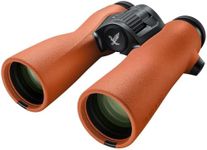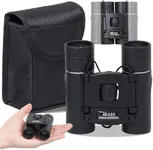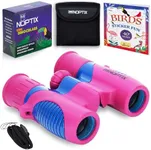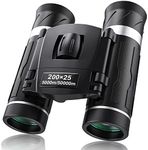Buying Guide for the Best Bird Watching Binoculars
Choosing the right bird-watching binoculars can greatly enhance your bird-watching experience. The right pair will allow you to see birds clearly and comfortably, even from a distance. When selecting binoculars, it's important to consider several key specifications to ensure you get the best fit for your needs. Here are the main specs to look at and how to navigate them.MagnificationMagnification indicates how many times closer an object will appear compared to the naked eye. For bird-watching, a magnification of 8x or 10x is generally recommended. 8x magnification provides a wider field of view, which is useful for spotting and following birds. 10x magnification offers more detail but can be harder to keep steady. Choose 8x if you are a beginner or if you will be observing in dense areas, and 10x if you are more experienced or will be observing in open spaces.
Objective Lens DiameterThe objective lens diameter, measured in millimeters, determines how much light the binoculars can gather. This affects the brightness and clarity of the image. Common sizes for bird-watching are 32mm and 42mm. 32mm lenses are lighter and more portable, making them ideal for long hikes. 42mm lenses gather more light, providing brighter images, especially in low-light conditions like dawn or dusk. Choose based on your typical bird-watching environment and how much weight you are comfortable carrying.
Field of ViewField of view (FOV) is the width of the area you can see through the binoculars, usually measured in feet at 1,000 yards. A wider FOV makes it easier to locate and track birds, especially those that move quickly. Binoculars with a FOV of 300 feet or more are generally good for bird-watching. If you are a beginner or often watch birds in flight, a wider FOV will be beneficial. More experienced bird-watchers might prefer a narrower FOV for more detailed observation.
Weight and SizeThe weight and size of binoculars can affect how comfortable they are to use over long periods. Lighter and more compact binoculars are easier to carry and handle, especially during extended bird-watching sessions. However, they might have smaller objective lenses, which can affect image brightness. Consider how long you typically spend bird-watching and whether you prioritize portability or image quality. If you often go on long hikes, lighter binoculars might be more suitable.
Eye ReliefEye relief is the distance from the eyepiece to your eye while still seeing the full field of view. This is especially important for people who wear glasses. Longer eye relief (15mm or more) allows you to use binoculars comfortably with glasses on. If you wear glasses, look for binoculars with adjustable eye cups and longer eye relief to ensure a comfortable viewing experience.
Waterproofing and DurabilityWaterproofing and durability are important for outdoor use, as bird-watching often involves exposure to various weather conditions. Waterproof binoculars are sealed to prevent moisture from entering, which can fog up the lenses. Look for binoculars labeled as waterproof or weather-resistant. Additionally, consider the build quality and materials used, as more durable binoculars will withstand rough handling and last longer. If you frequently bird-watch in wet or rugged environments, prioritize these features.


